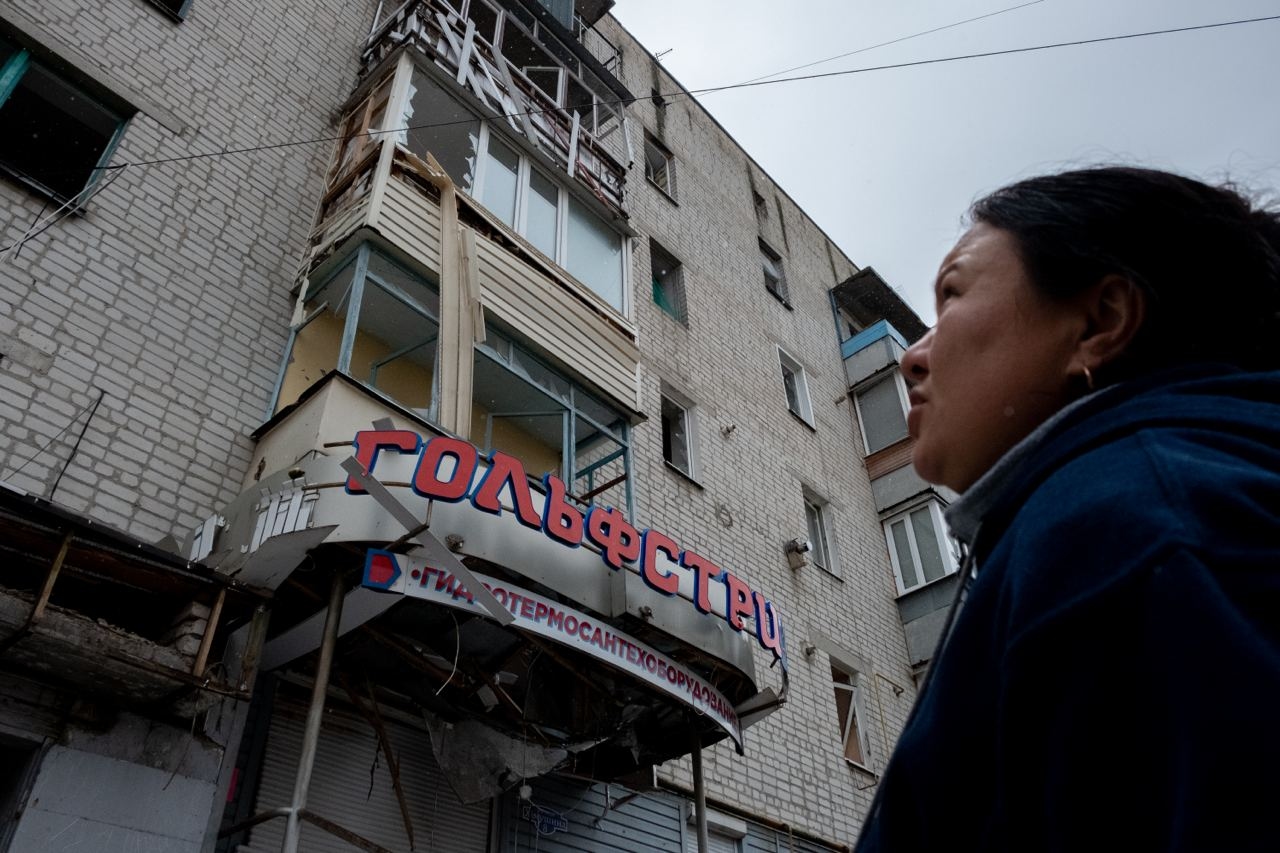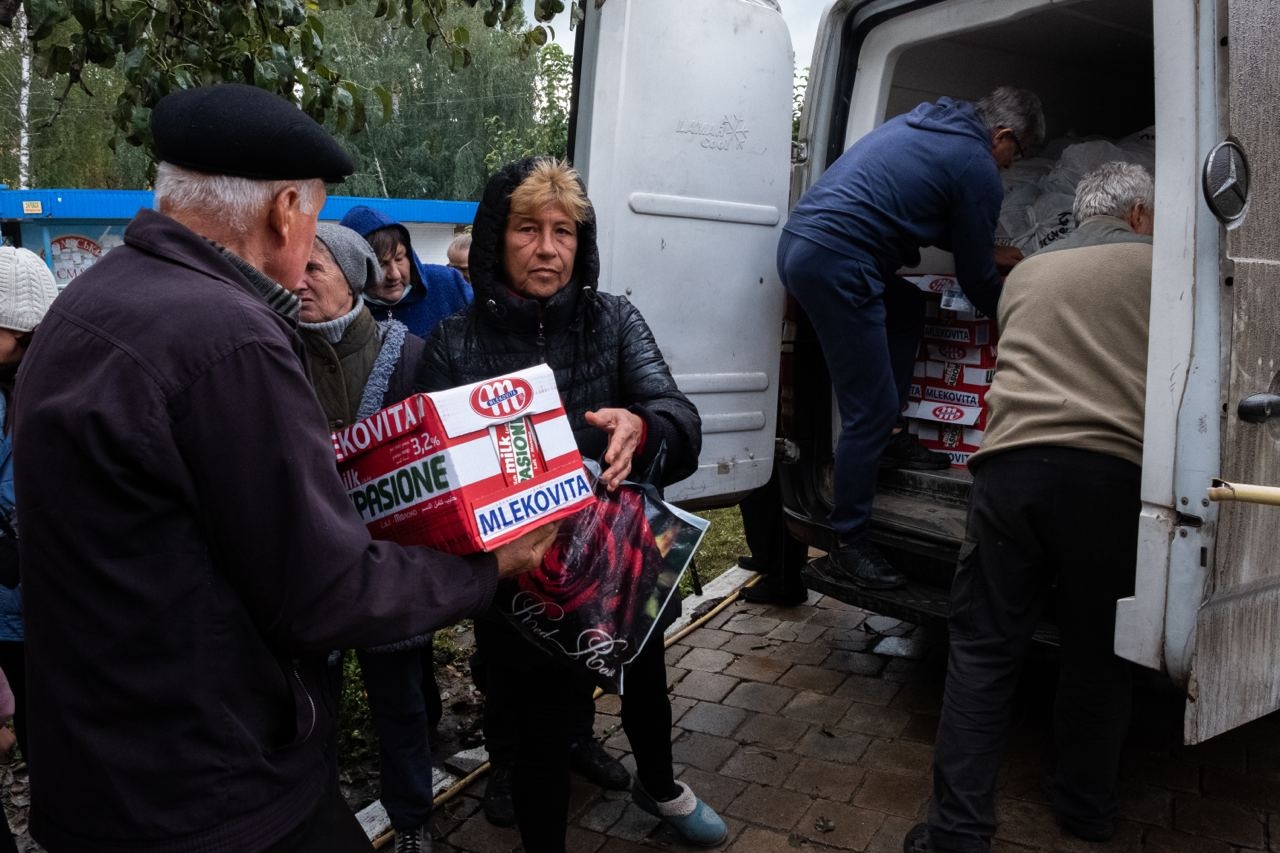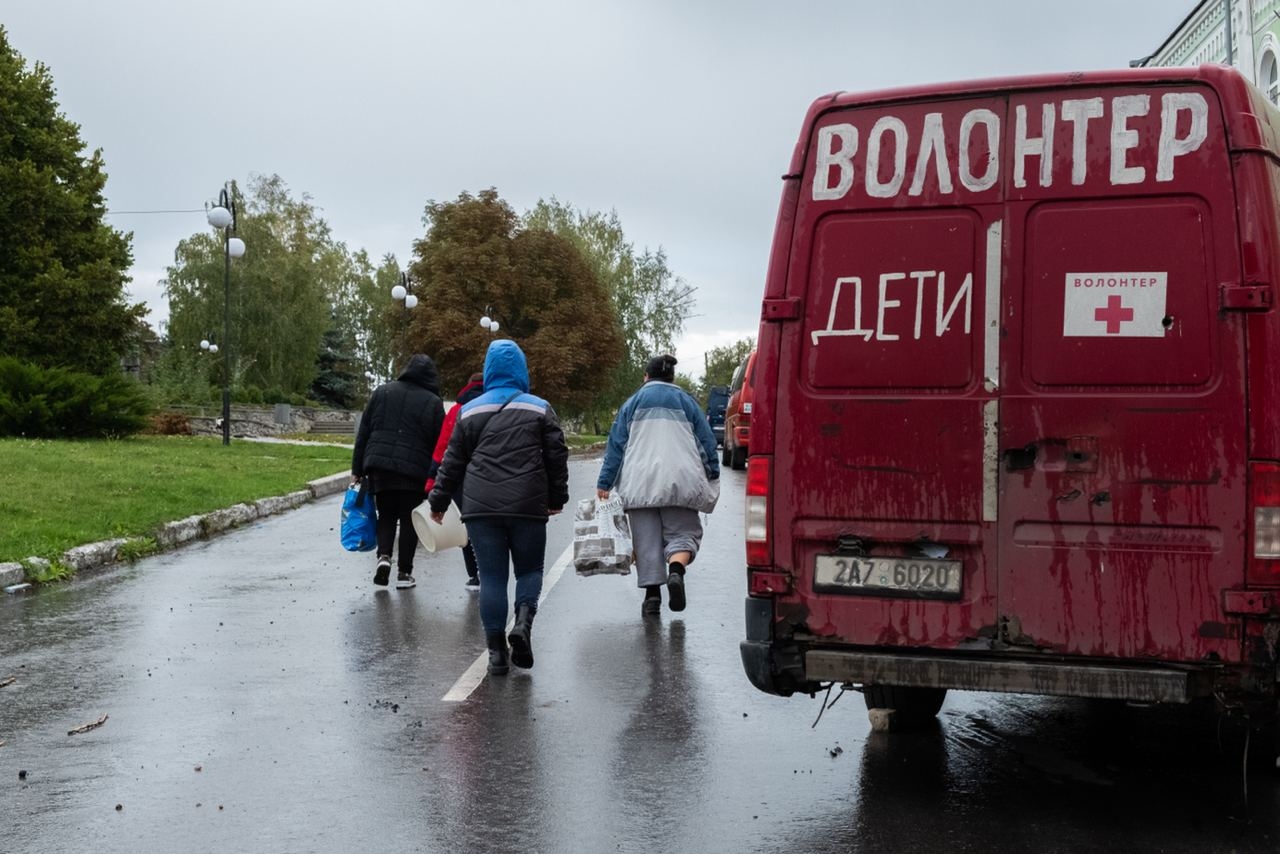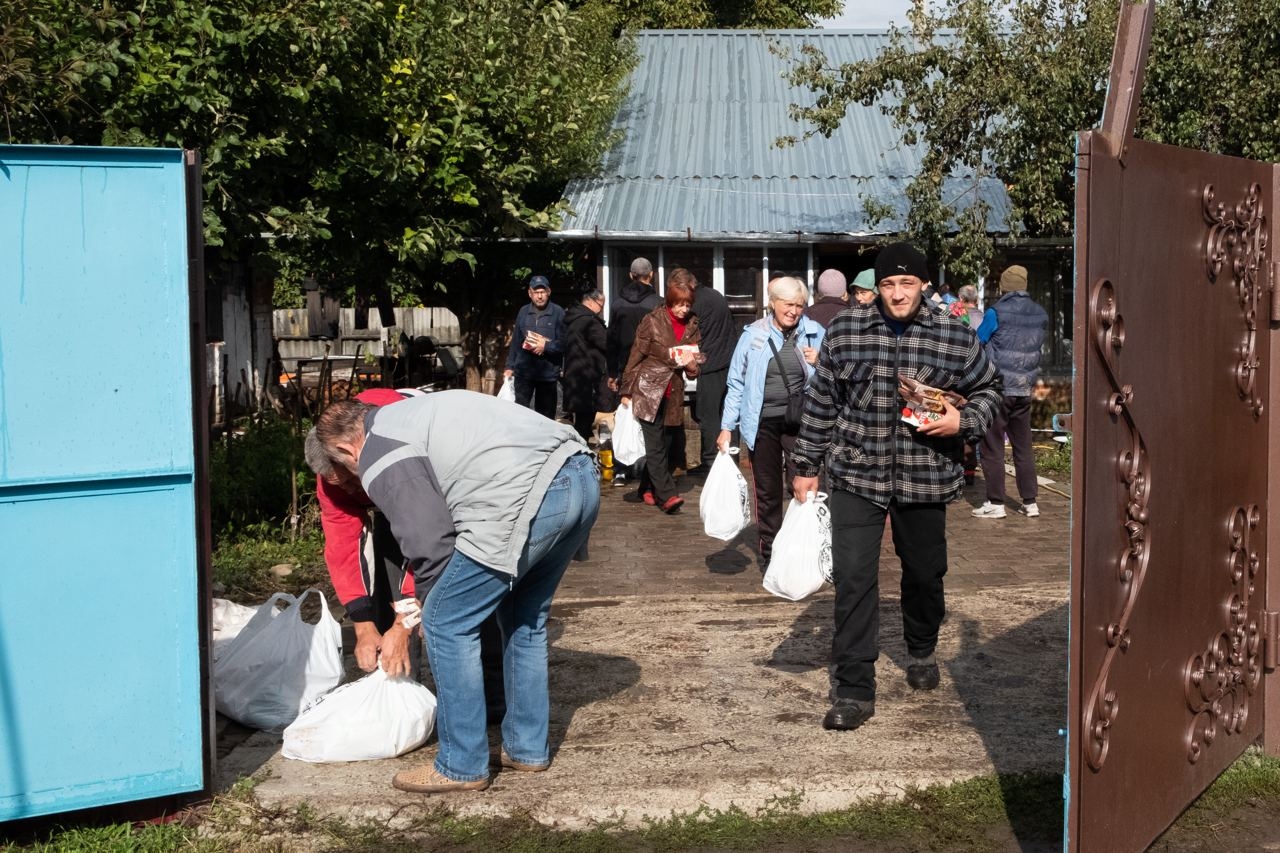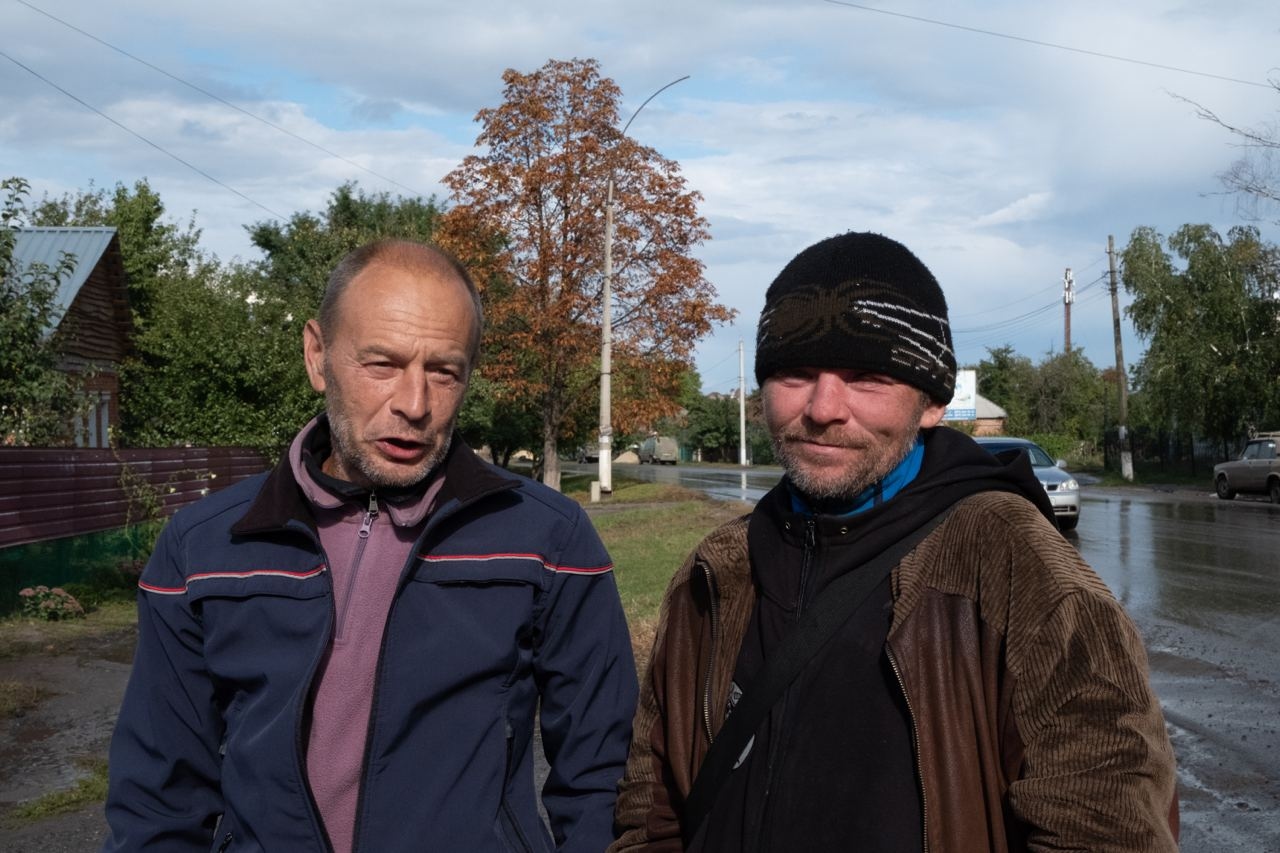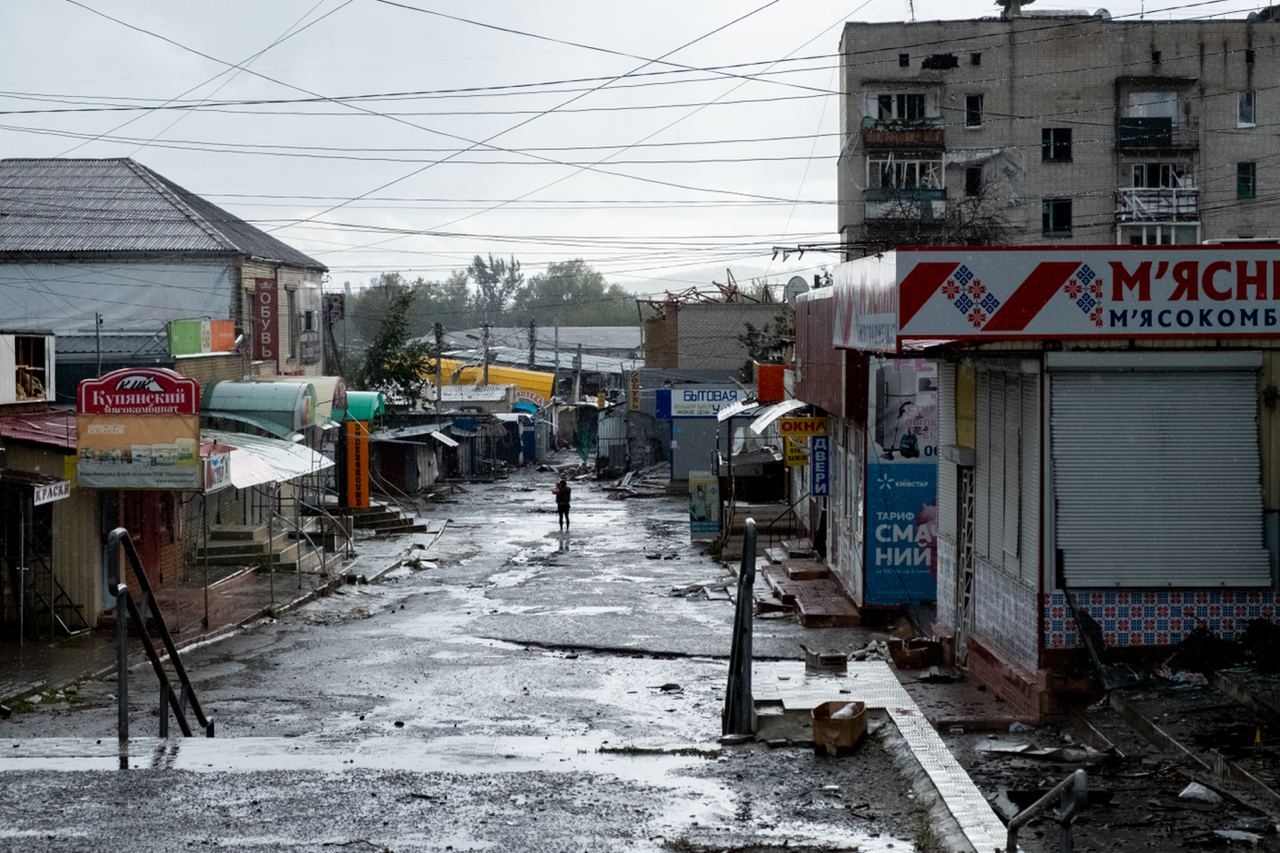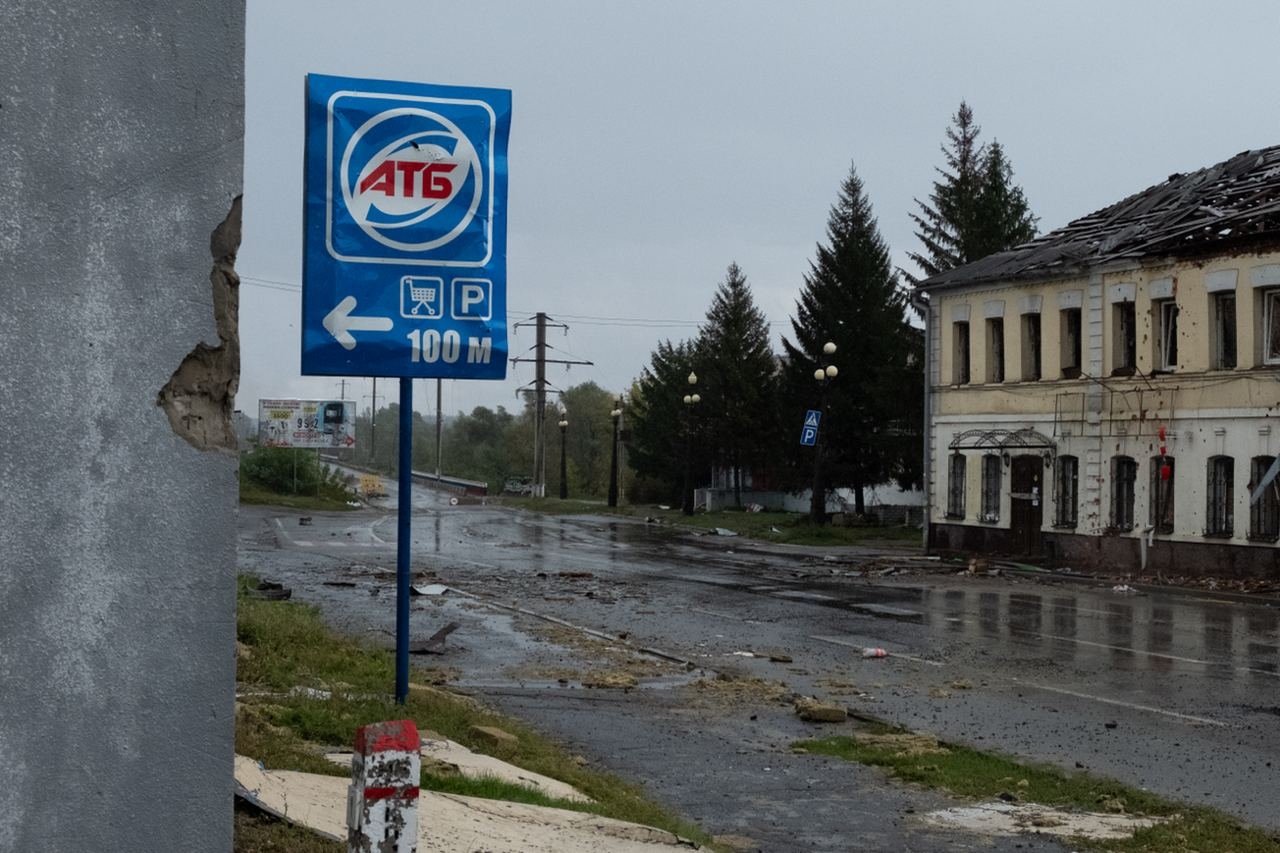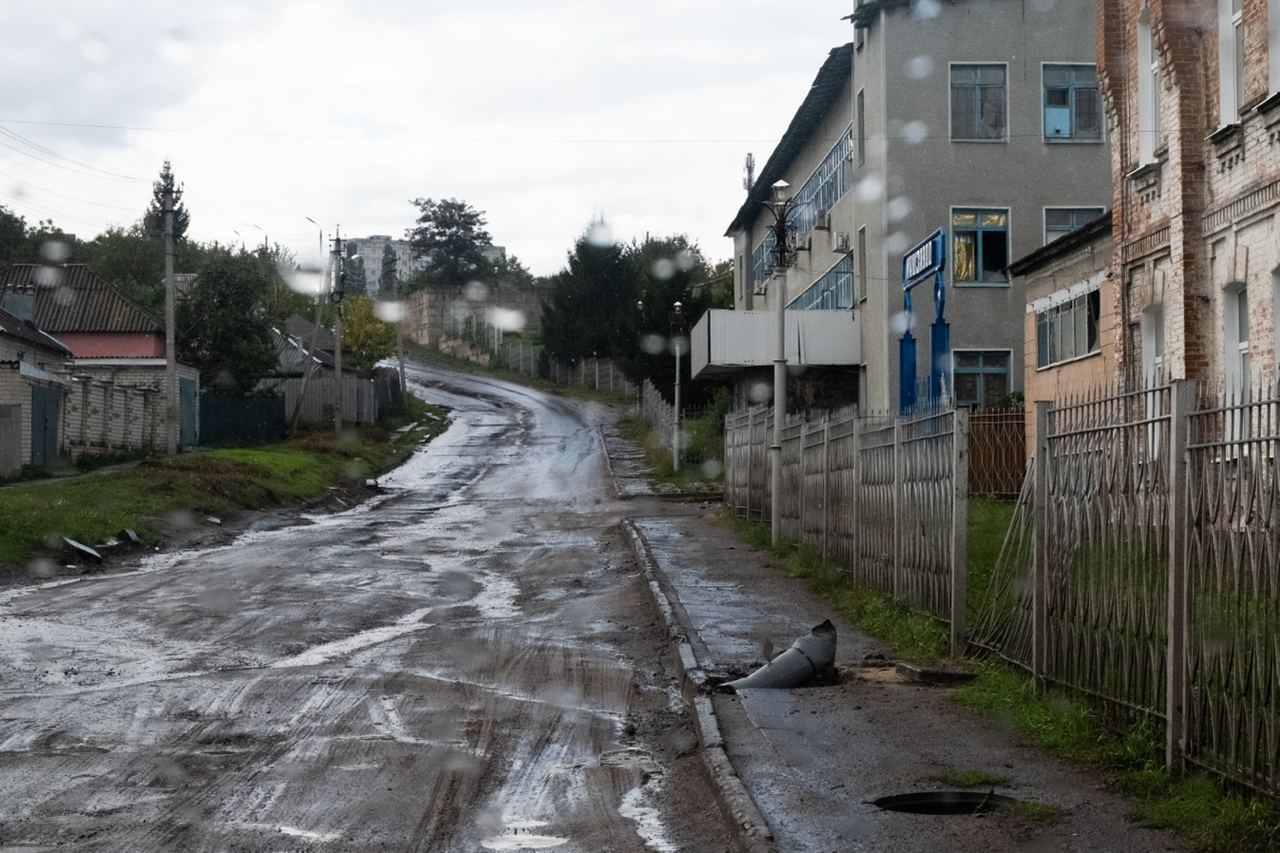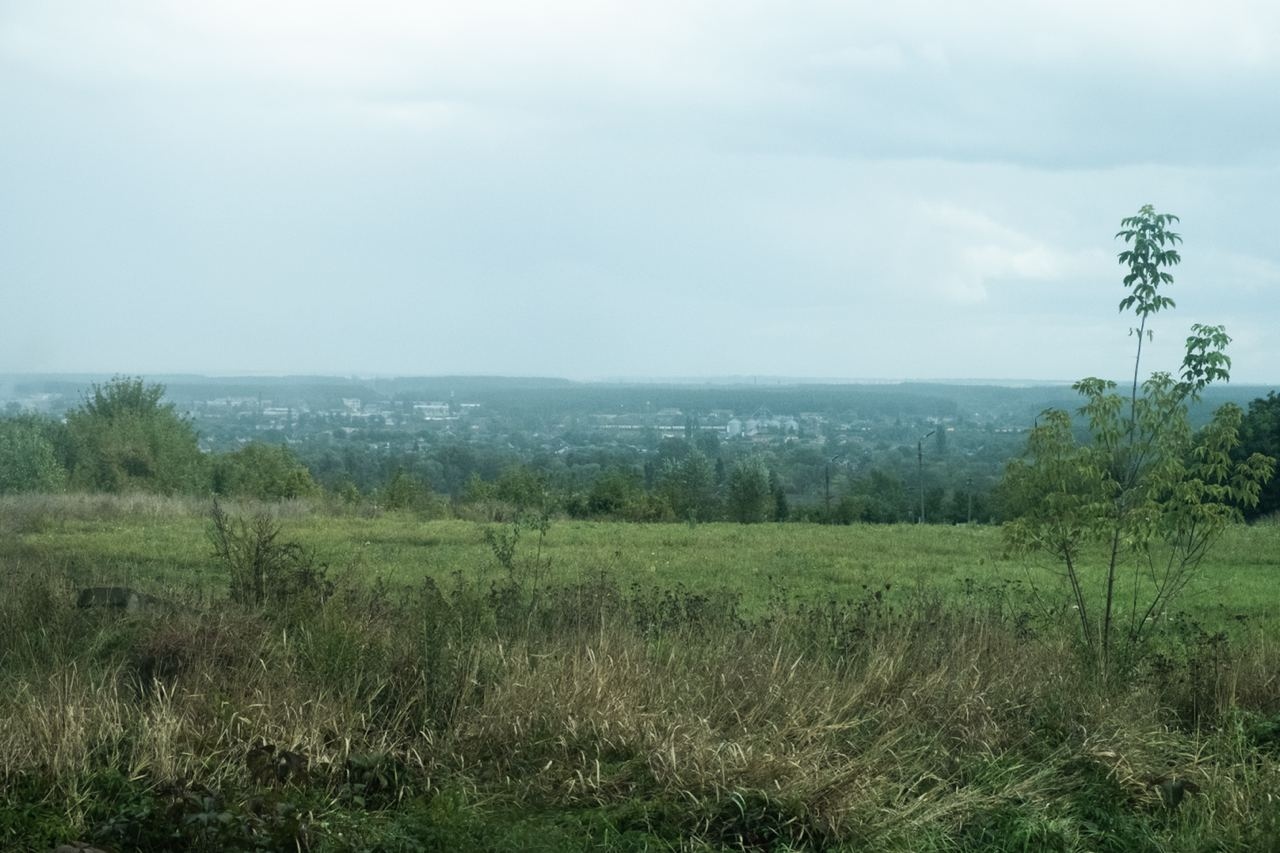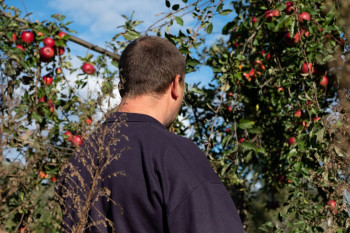From occupation to active war zone: Danger persists for Ukrainians in liberated territories

KUPIANSK, Kharkiv Oblast — For the handful of Ukrainians left in the center of Kupiansk, life since liberation from Russian occupation has been reduced to an exercise in survival.
The city in Kharkiv Oblast is shelled throughout the day by Russian artillery on the other side of the Oskil River, where fierce fighting remains ongoing to secure the rest of the city. Easily distinguishable from outgoing fire, the deep crash of incoming shells break the silence of the empty streets; sometimes a few minutes apart, sometimes a few seconds.
People’s daily routine exists almost entirely within the walls of cellars and bomb shelters. Cut off from utilities, emergency services, and humanitarian aid, locals only take the risk of emerging to the street level to search for basic necessities. But there are no air raid sirens in Kupiansk, and any time spent above ground is a lottery, with the odds least favorable in the town center.
Iryna, a 47-year-old mother of two who declined to give her last name out of personal fear, looked out from the entrance to her five-story apartment building, waiting for her mother to emerge from the basement of her home across the road opposite. Iryna’s building has taken significant damage with hardly any windows remaining intact, and rainwater seeping throughout the walls after a Russian shell punched through the top floor.
Her mother’s house was annihilated by a direct hit only five days ago. The front facade, with traditional Ukrainian window frames painted in a fresh coat of cobalt blue, is all that remains of her home.“We were in (my) mother’s cellar when the house was hit,” Iryna told the Kyiv Independent on the street outside the ruins. “We barely made it out alive, but everything she owned was lost forever.”
Before the full-scale invasion, Kupiansk was an important railway hub and a center of mixed industry with a population of 27,000.
The city was left mostly intact when it was taken by Russian forces in late February without a fight. When the western side of the city was liberated by Ukrainian forces on Sept. 10, the strategic Oskil River became the new front line in Kharkiv Oblast.
“The Russians left,” Iryna said, “but they didn’t go far.”
Not fit for living
Up the hill on the western edge of the city, around a hundred residents of Kupiansk wait for humanitarian aid packages delivered from Kharkiv.
Serhiy Udovyk, a 60-year-old electricity grid worker, stands in line with his wife and two sons. “Life is very tough at the moment,” he said. “No water, no gas, no electricity, nothing.”
As long as the fighting continues in and around Kupiansk, no work can be done to restore utilities. Water, gas, electricity, and phone signal in the city had been all connected to Russian networks during the occupation, and Russian forces destroyed pipelines and cables as they left the city two weeks ago.
“We are waiting for the word to get to work,” Udovyk said. “Until then, we are sitting tight, but we can’t live like this for long.”
It is difficult to find someone whose lives haven’t been directly touched by the recent shelling. Volodymyr Shevchenko, 40, paid the price for choosing not to sleep in a cellar when his window was blown out by a nearby shell, delivering a large cut above the eye.
“I just washed it out with moonshine, there are no ambulances here,” he said. “I’m just lucky it wasn’t shrapnel.”
In the center where Iryna lives, the damage is a lot more severe, but alternatives are scarce.
“I had a chance to move to another place further up the road,” she said. “Then one neighbor was killed in the house opposite, and another further down the street just today; nobody was there to help, they’ll bury him in the yard.”
Thousands of people have been evacuated from Kupiansk since the fighting began after liberation, but many are reluctant despite the direct threat to life.
Iryna and her family want to be evacuated, but only to their summer house in Shaptivka outside Kupiansk, itself still in danger of Russian shelling. Volunteers have offered to take them to Kharkiv, but she consistently refuses. “How will we live in Kharkiv, in a metro station?” she said. “They tell us to look for help from friends or relatives, but we don’t have any. Did they ask us if we have any money?”
For Udovyk, time is running out for the decision to stay or to leave.
“We'll wait for a week or so more,” he said. “If this doesn’t end by then, if we still won’t have gas or electricity, we’ll get out of here.”
Faith in progress
As dire as the situation in Kupiansk remains, residents understand that there is one possible solution.
As Russia chooses to escalate its faltering invasion of Ukraine with mobilization and sham referendums, the world is closely waiting to see whether Ukraine can push much further beyond the Oskil River before winter sets in.
For the people of Kupiansk, the success of this advance is the difference between living in safety and in an active war zone.
“They need to be pushed further,” Iryna said, “all the way back to their homes and families so that we can live in peace.”
Ukrainian soldiers posted in Kupiansk keep the locals regularly updated about the battles on the other side. “They told us that they’d taken the area of Podoly (village),” Shevchenko said, adding that Kupiansk-Vuzlovyi “should just be a matter of time.”
Two days later, on Sept. 26, Ukrainian forces were photographed at the eastern entrance to Kupiansk-Vuzlovyi, the sister city on the other side of the Oskil River.
By all accounts, the fighting on the opposite bank is fierce. “They (Ukrainians) tell me that the forces are very unequal in the Russians’ favor,” Iryna said. “It could be a long while before they (Russians) are pushed out of the artillery range of our city.
Nevertheless, locals remaining in Kupiansk certainly don’t begrudge the Ukrainian military’s presence.
“Never mind everything else, I’ve been much happier since they arrived, '' Udovyk said. “Ukraine should be Ukraine.”
Frontier zone
Elsewhere in Kharkiv Oblast, military success offers no guarantee of long-term safety from Russian attack.
Residents of Kozacha Lopan, a town four kilometers from the state border with Russia, also find themselves on the front line after liberation. The central square is lively, as people shuffle in and out of the administration building, collecting their first Ukrainian pensions in six months, or applying for permission to exit the town, as the police and security services continue to search for Russian collaborators.
Kozacha Lopan has not suffered as much as Kupiansk in the last two weeks, but cross-border artillery skirmishes occur throughout the day between Ukrainian and Russian batteries. Looking north from the train station at the abandoned tracks heading off to the border, Russian rockets could be heard launched from across the border, only to land in the fields behind Kozacha Lopan.
Still, some of the Russian fire does reach the town.
Tetiana Danilova, 59, has been an early victim of the ongoing shelling. Just as her local shop began to work again, without power but with some basic groceries, it had its windows blown out on Sept. 16, five days after Ukrainian troops entered Kozacha Lopan. “More houses are destroyed every day,” she said.
Here, Russian forces cannot be pushed further back. “We can expect anything and everything from them in the future,” town mayor Viacheslav Zadorenko, 43, told the Kyiv Independent. “It's entirely possible that they will regather their forces and cross into our territory again.”
With the remaining fighting in Kharkiv Oblast in the east near Kupiansk, far away from Kozacha Lopan, the military aims of the ongoing artillery exchanges are unclear.
“I think the enemy just wants to terrify the population and to force our government to sit down at the negotiating table,” Zadorenko said. “Our people, Ukrainians, understand perfectly well that negotiations are not at all an option.”
Latent fear
Not everybody in Kozacha Lopan shares the resolute views of their mayor.
“We can only be safe when there is a negotiated peace,” said Danilova. “Of course we can’t just give away territory, but we are paying for this war with our grief every day, there needs to be a way out.”
Six months under Russian occupation have left deep scars upon many locals.
Valentyna Povelychenko, 62, spoke through tears to the Kyiv Independent after meeting a friend on the street for the first time in months. “We remembered something that happened to us back then,” she said, not elaborating further.
“Of course we were happy when the Ukrainian soldiers arrived. Russia had ‘liberated’ us from our homes, our relatives, our livelihoods, everything,” Povelychenko said. “But this fear, this fear of the border zone remains. There is nothing worse than when shells are landing near you.”
Despite the lack of a cellular network, news of the announcement of mobilization in Russia spread quickly through Kozacha Lopan, along with reports that Russia sent hundreds of conscripts to Belgorod, just 35 kilometers across the border from the town.
Compared to Feb. 24, when Russian forces entered Kozacha Lopan in the early hours of the full-scale invasion, the Ukrainian army is better prepared for new incursions into the area. The exact place of Kozacha Lopan in these defensive plans, however, is unclear.
“I tell people that we are here, our guys (soldiers) are here, but they (civilians) should consider evacuating to safer areas,” Zadorenko said, “but how the border will be defended is a question for the army.”
Present on posters, flyers, and propaganda newspapers, Russia’s slogan in the occupied territories of Ukraine has been “Russia is here forever.” In places like Kozacha Lopan, liberation exposed the fragility of that claim. For now at least, however, it is difficult to convince locals that Ukraine itself is back here forever.
“Our soldiers promise that it won't happen again, that they won't allow it again,” Povelychenko said. “We believe, we want to, but even after a ceasefire is signed, that black fear will still live inside my soul.”
Note from the author:
Hi, I'm Francis Farrell, reporting from Ukraine's liberated territories in Kharkiv Oblast. Russia’s war against Ukraine is escalating as the Ukrainian army pushes back and Russia threatens a nuclear strike. With the world watching to see what comes next, please consider continuing to support our reporting.


